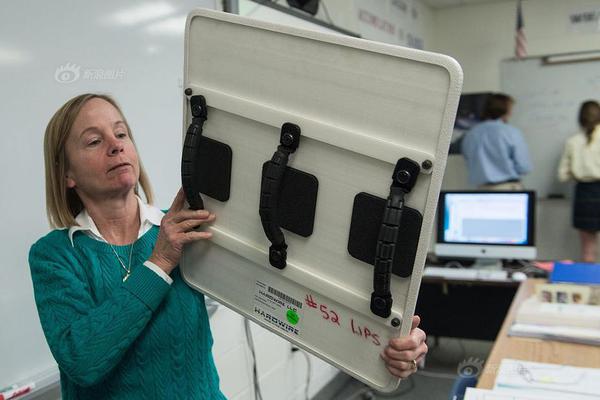
1. Automobile manufacturing materials are divided into metal materials and non-metallic materials and composite materials. Metal materials: steel, aluminum, magnesium alloy.Non-metallic materials: ceramics, plastics. Composite materials: fiber-reinforced ceramics, fiber-reinforced metal.
2. Automotive materials are usually divided into the following two categories: metal materials: heavy metal materials such as steel plates and cast iron; light metals such as aluminum, magnesium and titanium and their alloy materials, foam metals and other materials. Non-metallic materials: engineering plastics, fibers, resins, glass, rubber, non-metallic foam materials, non-metallic composites, etc.
3. There are a variety of materials used in automobile manufacturing, including but not limited to the following: steel: used to make frames, chassis, doors, etc. High-strength steel can improve the rigidity and stability of the car. Aluminum alloy: used to manufacture engines, car bodies, hubs, etc.

1. Most of the car body shell is made of metal materials, such as steel plates, etc., and some models are made of aluminum alloy.
2. Galvanized thin steel plate Since the 1970s, galvanized thin steel plate has been used for car body steel plate. Galvanized thin steel plate is widely used in automobiles because it has good corrosion resistance. Ordinary low-carbon steel plate In modern automobile production, ordinary low-carbon steel plate is the most used.
3. What material is the car shell made of?The car shell is made of aluminum, reinforced plastic, steel plate, carbon fiber and other materials. Choose different materials according to the different uses and parts of the car. For example, Audi luxury cars are made of aluminum, racing cars are made of carbon fiber, and the hood of Hummer H2 is made of reinforced plastic.
4. The car shell is not made of plastic material, but made of aluminum, reinforced plastic, steel plate, carbon fiber and other materials. Different materials are selected according to the different uses and parts of the cars of the car. For example, Audi high-end cars are made of aluminum, racing cars are made of carbon fiber, and the hood of Hummer H2 is made of reinforced plastic. .
Metal materials: steel, aluminum, magnesium alloy. Non-metallic materials: ceramics, plastics. Composite materials: fiber-reinforced ceramics, fiber-reinforced metal.Most of the car body shells are made of metal materials, such as steel plates, carbon fiber, aluminum, reinforced plastics, etc. Different uses of car shells and different parts are different materials.
The manufacturing materials of automobiles are divided into metal materials, non-metallic materials and composite materials. Metal materials: steel, aluminum, magnesium alloy, etc. Non-metallic materials: ceramics, plastics, etc. Composite materials: fiber-reinforced ceramics, fiber-reinforced metal, etc.
A variety of materials are used in automobile manufacturing, including but not limited to the following: Steel: used to manufacture frames, chassis, doors, etc. High-strength steel can improve the rigidity and stability of the car. Aluminum alloy: used to manufacture engines, car bodies, hubs, etc.
The four most commonly used materials in automobiles are plastic, glass, industrial ceramics and rubber. In addition, leather is also used for seats a lot.Plastic: interior car body decoration, steering wheel, various handles, switches, wires, connectors, headlight shells, bumpers, etc.
The manufacturing materials of automobiles are divided into metal materials, non-metallic materials and composite materials. Metal materials: steel, aluminum, magnesium alloy, etc. Non-metallic materials: ceramics, plastics, etc. Composite materials: fiber-reinforced ceramics, fiber-reinforced metal, etc.
The manufacturing materials of automobiles are divided into metal materials, non-metallic materials and composite materials. Metal materials: steel, aluminum, magnesium alloy. Non-metallic materials: ceramics, plastics. Composite materials: fiber-reinforced ceramics, fiber-reinforced metal.
Steel: used to make frames, chassis, doors, etc.High-strength steel can improve the rigidity and stability of the car. Aluminum alloy: used to manufacture engines, car bodies, hubs, etc. Aluminum alloy has the advantages of lightweight, high strength, corrosion resistance and so on. Plastic: used to manufacture parts, interior decoration, appearance, etc.
Casino redeem-APP, download it now, new users will receive a novice gift pack.
1. Automobile manufacturing materials are divided into metal materials and non-metallic materials and composite materials. Metal materials: steel, aluminum, magnesium alloy.Non-metallic materials: ceramics, plastics. Composite materials: fiber-reinforced ceramics, fiber-reinforced metal.
2. Automotive materials are usually divided into the following two categories: metal materials: heavy metal materials such as steel plates and cast iron; light metals such as aluminum, magnesium and titanium and their alloy materials, foam metals and other materials. Non-metallic materials: engineering plastics, fibers, resins, glass, rubber, non-metallic foam materials, non-metallic composites, etc.
3. There are a variety of materials used in automobile manufacturing, including but not limited to the following: steel: used to make frames, chassis, doors, etc. High-strength steel can improve the rigidity and stability of the car. Aluminum alloy: used to manufacture engines, car bodies, hubs, etc.

1. Most of the car body shell is made of metal materials, such as steel plates, etc., and some models are made of aluminum alloy.
2. Galvanized thin steel plate Since the 1970s, galvanized thin steel plate has been used for car body steel plate. Galvanized thin steel plate is widely used in automobiles because it has good corrosion resistance. Ordinary low-carbon steel plate In modern automobile production, ordinary low-carbon steel plate is the most used.
3. What material is the car shell made of?The car shell is made of aluminum, reinforced plastic, steel plate, carbon fiber and other materials. Choose different materials according to the different uses and parts of the car. For example, Audi luxury cars are made of aluminum, racing cars are made of carbon fiber, and the hood of Hummer H2 is made of reinforced plastic.
4. The car shell is not made of plastic material, but made of aluminum, reinforced plastic, steel plate, carbon fiber and other materials. Different materials are selected according to the different uses and parts of the cars of the car. For example, Audi high-end cars are made of aluminum, racing cars are made of carbon fiber, and the hood of Hummer H2 is made of reinforced plastic. .
Metal materials: steel, aluminum, magnesium alloy. Non-metallic materials: ceramics, plastics. Composite materials: fiber-reinforced ceramics, fiber-reinforced metal.Most of the car body shells are made of metal materials, such as steel plates, carbon fiber, aluminum, reinforced plastics, etc. Different uses of car shells and different parts are different materials.
The manufacturing materials of automobiles are divided into metal materials, non-metallic materials and composite materials. Metal materials: steel, aluminum, magnesium alloy, etc. Non-metallic materials: ceramics, plastics, etc. Composite materials: fiber-reinforced ceramics, fiber-reinforced metal, etc.
A variety of materials are used in automobile manufacturing, including but not limited to the following: Steel: used to manufacture frames, chassis, doors, etc. High-strength steel can improve the rigidity and stability of the car. Aluminum alloy: used to manufacture engines, car bodies, hubs, etc.
The four most commonly used materials in automobiles are plastic, glass, industrial ceramics and rubber. In addition, leather is also used for seats a lot.Plastic: interior car body decoration, steering wheel, various handles, switches, wires, connectors, headlight shells, bumpers, etc.
The manufacturing materials of automobiles are divided into metal materials, non-metallic materials and composite materials. Metal materials: steel, aluminum, magnesium alloy, etc. Non-metallic materials: ceramics, plastics, etc. Composite materials: fiber-reinforced ceramics, fiber-reinforced metal, etc.
The manufacturing materials of automobiles are divided into metal materials, non-metallic materials and composite materials. Metal materials: steel, aluminum, magnesium alloy. Non-metallic materials: ceramics, plastics. Composite materials: fiber-reinforced ceramics, fiber-reinforced metal.
Steel: used to make frames, chassis, doors, etc.High-strength steel can improve the rigidity and stability of the car. Aluminum alloy: used to manufacture engines, car bodies, hubs, etc. Aluminum alloy has the advantages of lightweight, high strength, corrosion resistance and so on. Plastic: used to manufacture parts, interior decoration, appearance, etc.
Hearthstone arena class win rates reddit
author: 2025-02-23 15:34100 free bonus casino no deposit GCash
author: 2025-02-23 14:17Hearthstone arena class win rates reddit
author: 2025-02-23 16:14 Casino Plus login register
Casino Plus login register
597.65MB
Check Casino free 100 no deposit
Casino free 100 no deposit
315.74MB
Check Casino Plus GCash login
Casino Plus GCash login
214.14MB
Check UEFA Champions League standings
UEFA Champions League standings
977.59MB
Check 100 free bonus casino no deposit GCash
100 free bonus casino no deposit GCash
356.13MB
Check TNT Sports
TNT Sports
153.14MB
Check Hearthstone arena deck Builder
Hearthstone arena deck Builder
622.29MB
Check DigiPlus
DigiPlus
579.89MB
Check Casino redeem
Casino redeem
112.41MB
Check casino plus free 100
casino plus free 100
266.97MB
Check Hearthstone deck
Hearthstone deck
271.14MB
Check Bingo Plus stock
Bingo Plus stock
696.86MB
Check Casino redeem
Casino redeem
162.98MB
Check Casino Plus app
Casino Plus app
467.83MB
Check Arena Plus login
Arena Plus login
264.15MB
Check LR stock price Philippines
LR stock price Philippines
452.88MB
Check Casino Plus free 100
Casino Plus free 100
667.93MB
Check DigiPlus stock
DigiPlus stock
476.32MB
Check Casino redeem
Casino redeem
874.41MB
Check Bingo Plus
Bingo Plus
591.46MB
Check Walletinvestor digi plus
Walletinvestor digi plus
793.65MB
Check Hearthstone deck
Hearthstone deck
697.28MB
Check Hearthstone arena deck Builder
Hearthstone arena deck Builder
663.16MB
Check Champions League
Champions League
897.92MB
Check Hearthstone arena class win rates reddit
Hearthstone arena class win rates reddit
269.79MB
Check bingo plus update today Philippines
bingo plus update today Philippines
987.31MB
Check casino plus free 100
casino plus free 100
652.44MB
Check DigiPlus Philippine
DigiPlus Philippine
646.72MB
Check Casino Plus login register
Casino Plus login register
971.42MB
Check Casino free 100 no deposit
Casino free 100 no deposit
229.31MB
Check Walletinvestor digi plus
Walletinvestor digi plus
716.34MB
Check Walletinvestor digi plus
Walletinvestor digi plus
359.86MB
Check Casino redeem
Casino redeem
219.75MB
Check 100 free bonus casino no deposit GCash
100 free bonus casino no deposit GCash
413.64MB
Check Hearthstone Wild Decks
Hearthstone Wild Decks
228.87MB
Check Casino Plus
Casino Plus
612.62MB
Check
Scan to install
Casino redeem to discover more
Netizen comments More
2052 PAGCOR online casino free 100
2025-02-23 16:09 recommend
326 DigiPlus stock
2025-02-23 15:06 recommend
247 Free sports events uefa champions league app android
2025-02-23 14:37 recommend
1865 App to watch Champions League live free
2025-02-23 14:19 recommend
1190 UEFA TV
2025-02-23 14:12 recommend